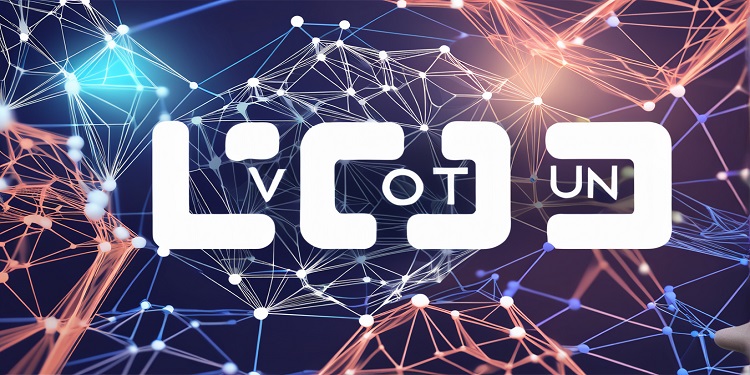 Tech giant IBM has become a leader in real-world blockchain technology applications. Blockchain-based solutions have already been implemented by the company to track food supply chains and ensure ethical minerals. IBM continues to work with a number of leading organizations through its blockchain network to solve complex business challenges.
Tech giant IBM has become a leader in real-world blockchain technology applications. Blockchain-based solutions have already been implemented by the company to track food supply chains and ensure ethical minerals. IBM continues to work with a number of leading organizations through its blockchain network to solve complex business challenges.
IBM Research is partnering with The Freshwater Trust (TFT), a non-profit organization that works to protect and restore freshwater ecosystems, and SweetSense Inc., a supplier of low-cost satellite-connected sensors, to monitor the use of groundwater in one of North America’s largest and most at-risk aquifers.
This project, which is also jointly funded by the Water Foundation and the Gordon and Betty Moore Foundation, will be supported by the University of Colorado at Boulder.
Scientists and engineers from the project will show how the blockchain and remote IoT sensors can measure the use of groundwater transparently and in real time accurately. The sensors transmit data from water extraction to orbiting satellites and then to the IBM blockchain platform in the IBM Cloud. The blockchain records all data exchanges or transactions carried out in an annex-only, unchangeable library.
Smart contracts will also be used when transactions are executed automatically when the conditions are met. The group will pilot the system in the Sacramento-San Joaquin River Delta in northern California, often referred to as the “nexus of the statewide water system in California.” The river delta covers 1,100 square miles and provides water to the San Francisco Bay Area and Southern California. It also supports dozens of fish, plant and animal species that are legally protected. In addition, almost 75% of this land is used for agriculture.
Dr. Solomon Assefa, Vice President, Emerging Market Solutions and Director for IBM Research, Africa, said “Based on a research project in Kenya with USAID, the Millennium Water Alliance and other partners, we are now applying our expertise in building decision support systems for water management for surface and groundwater data aggregation, workflow optimization and analytics to address similar challenges in California. With the addition of the blockchain, we can bridge critical trust and transparency gaps making it possible to build a robust, scalable and cost-efficient platform for managing precious groundwater supplies anywhere in the world.”
The collaboration between the organizations began in response to the 2014 Sustainable Groundwater Management Act (SGMA). SGMA mandated the establishment of groundwater sustainability agencies (GSAs), local groups responsible for ensuring sustainable management of regional groundwater supplies. The GSAs are responsible for the development and implementation of a plan to ensure sustainable use of local groundwater by 2040.
Alex Johnson, Freshwater Fund Director with TFT, said “In California and in the Central Valley, one of the biggest impacts on our river conditions is agriculture. This is a massive agricultural region that is severely groundwater stressed. This issue was brought to attention in California when a multi-year drought resulted in an impact of over $3 billion to the agricultural economy. California then passed the SGMA, which for the first time will regulate groundwater pumping. Now, however, the State of California is trying to determine how to share communal resources. As a non-profit, we are trying to support reaching these goals.”
A web-based dashboard for farmers, financers and regulators will be available throughout the pilot, allowing all parties to monitor and track groundwater use. This will also help to show how sustainable levels of pumping can be achieved by trading shares in the State of California in groundwater use. Individual users who require quantities of groundwater beyond their share cap can “purchase” shares of groundwater from other users who do not require their entire supply at a market-regulated rate.
According to IBM Research, Africa’s computer scientist Nathan Wangusi, researchers are developing a concept of “groundwater credit,” which will allow farmers to trade water sources among themselves.
“The blockchain allows for visibility of water extraction and keeps a tight ledger on this, while helping with transparency and the ability to trade assets. We are now developing a groundwater credit, which is an asset-based token that represents an amount of water that a user has rights to. This is similar to an environmental credit. For example, we currently have a project that uses plastic recycling as a tokenized credit that can be traded on a blockchain platform.”
For example, if a strawberry farmer plans to take the season to prepare the following harvest for an organic crop, they can trade or sell water credits to another farmer on the blockchain. Or, if a winery realizes that additional groundwater is needed to avoid losing the vintage due to a particularly dry season, the vintner can purchase additional shares of water without adversely affecting the aquifer.
In addition to blockchain, the sensor technology provided by SweetSense is an important element for monitoring groundwater supplies.
Evan Thomas, CEO of SweetSense and Mortenson Chair of Global Engineering at the University of Colorado Boulder, said “By remotely monitoring groundwater use via our sensors, we’re able to help improve and maintain sustainable access to water supplies for people, farmers, and livestock. The work we’re doing in Africa is directly translatable to California. Our research team at the University of Colorado will assist in modeling groundwater use through the sensor data and satellite detected rainfall and weather correlations.”
SweetSense is currently monitoring groundwater for more than a million people via satellite networks in Kenya and Ethiopia, and by the end of the year it plans to reach 5 million. Although this pilot is an early example of the potential of these technologies, the project teams also see it as an enormous opportunity for future success.
Johnson of TFT said “We are operating in a free market space and the regulations and requirements for ground water stability are only now being decided by local jurisdiction in California. Other western states are far behind, though. We view this as an opportunity to demonstrate how things can work if you apply them to a system with technologies like these.”
However, it is still a challenge to explain blockchain technology to all parties involved.
Johnson said “We have to explain to explain what blockchain is, why it provides security and enough transparency where it can be used for compliance. We need to demonstrate how this can help farmers have a more resilient aquifer to pump water from, while having the flexibility to trade amongst their neighbors if a drought occurs.”
In addition, this pilot’s success depends heavily on the technologies involved.
“The future success of these sustainability plans hinges on being able to track and report groundwater use, and likely will also require a robust way to trade groundwater shares as well” added Johnson.
“Our strategic intent is to harness new technologies to develop a system that makes getting groundwater more sustainable, collaborative, accurate and transparent process, which is why we are using the blockchain. We now have the project team and funding to do it, and a strong network of partners in the region that are open to an initial testing and building phase.”








